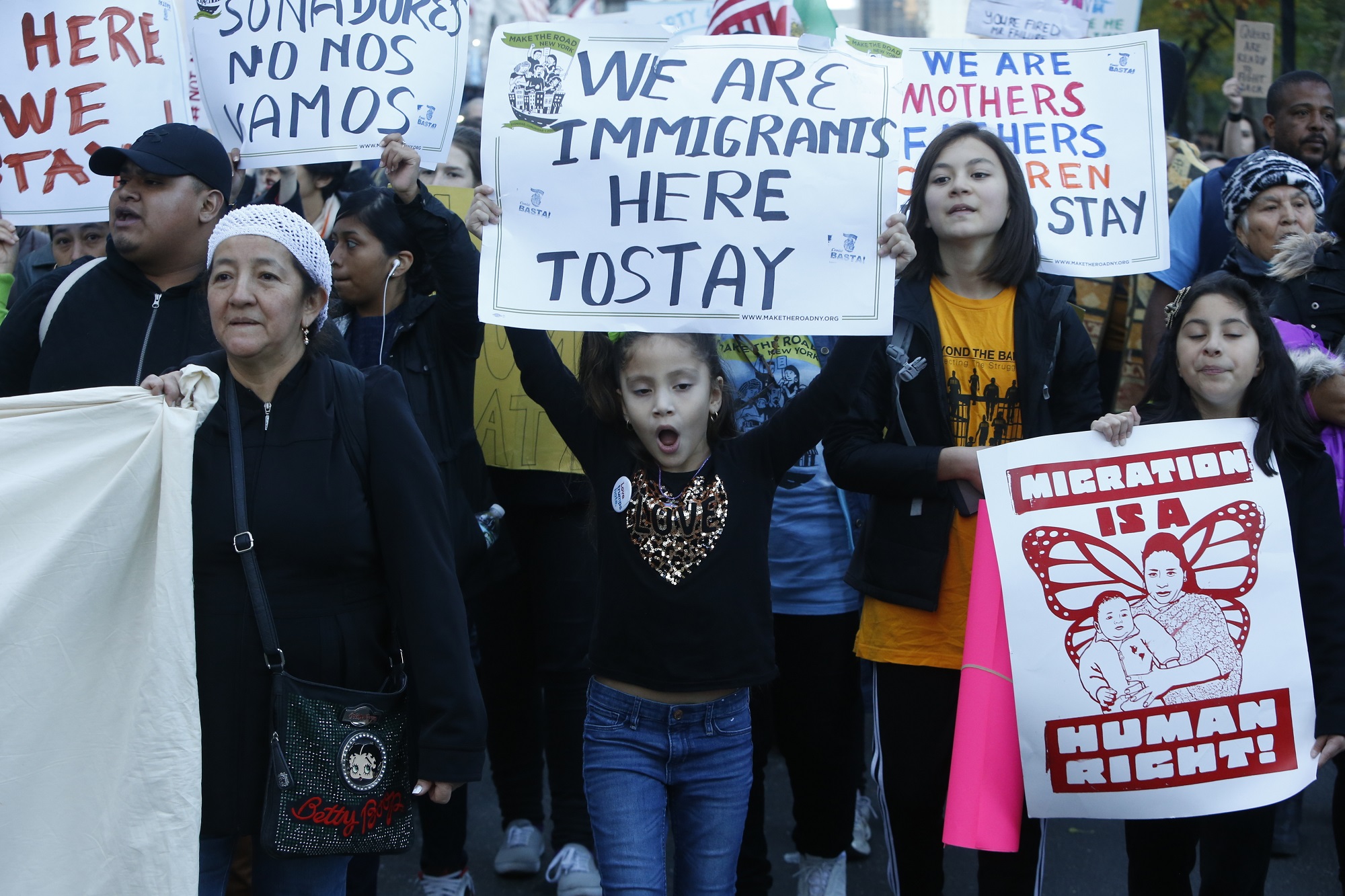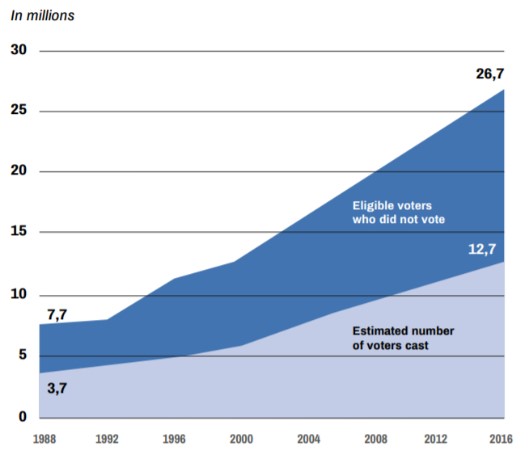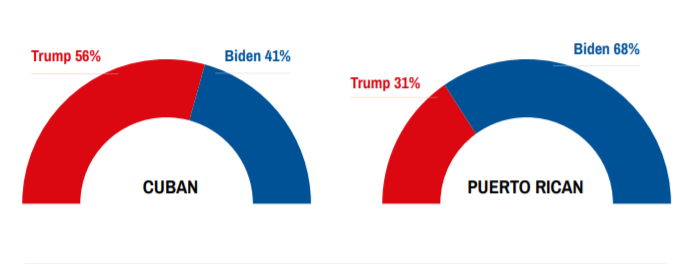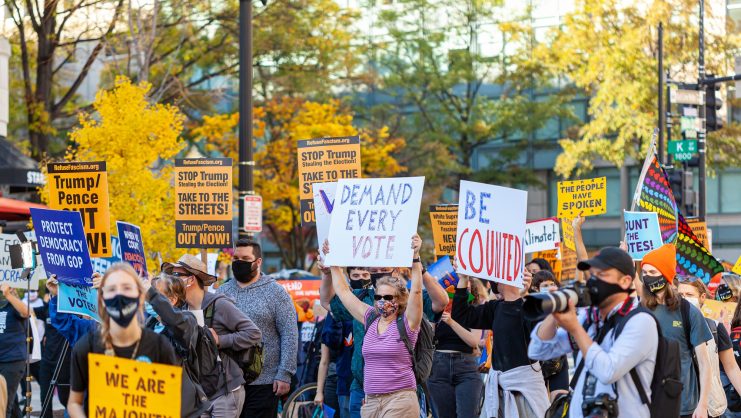On November 3rd 2020, for the first time in history, the Hispanic community was the largest ethnic minority group voting in a US presidential election. The approximately 32 million Hispanics who were eligible to vote, representing 13% of all eligible voters in the country, proved that when they mobilize they can be critical to the U.S. election results. In fact, Hispanic support was decisive in many states for both Republicans and Democrats, setting a precedent for the country’s political future.
Understanding the Hispanic Vote
Before analyzing the results of the presidential election, it is important to highlight the characteristics of the Hispanic vote in the United States. Throughout history, this community has had a greater tendency towards Democratic candidates, and with the exception of George W. Bush’s positive results that exceeded 40% support, Hispanics have always favored Democrats by wide margins.
Secondly, it should be noted that the turnout of the Hispanic community has traditionally been low compared to other groups in the country. This has limited the impact of the Hispanic vote in previous elections but one of the key aspects of the 2020 election was the increase in Hispanics casting their ballots. Preliminary data from states with the highest proportion of Hispanic voters suggests that the Hispanic community voted in record numbers with estimated turnout rates between 60% and 65%, equaling between 15-20 million votes.
Source: Pew Research Center
Finally, it’s important to understand that the Hispanic community is not monolithic. The state of residence, the socioeconomic status, the ancestry of the citizens, and many other factors impact their voting trends and behaviors. This diversity is important when considering the results in various states. Florida, is a clear example, with Trump obtaining positive results in the state largely thanks to the Cuban community which, broadly speaking, is suspicious of any left-leaning politics. At the same time in Florida, the trends of other Hispanic groups, for example mainland voting Puerto Ricans have been completely different.
Source: Americas Society, Council of the Americas
Where was the Hispanic vote especially important?
Although the growth of the Hispanic community has been significant and sustained throughout the country, the political relevance of the community varies from state to state depending on their proportion of Hispanic voters. The state with the highest proportion of Hispanic voters is New Mexico with 43%, followed by California and Texas with 30%, Arizona with 24%, and Florida and Nevada with 20%. This demographic shift over the years has had a significant impact on the voting outcome of certain states, particularly away from Republican strongholds. Arizona, which was typically considered a “safe state” for Republicans became a “swing state” in the last election because of the growing number of Hispanic voters. Of course, there are some “safe states” that remain as they are, either because of their population or their landmass, and are not – yet – as easily affected by changes in demographics – but this is also because these states are already controlled by Democrats, for example, New York and California.
Taking a look at some key states, Biden outperformed Trump among Hispanics in Florida by 7%, a significant drop from the Democrats’ 27% lead in the 2016 election. This drop, which equates to around 300,000 votes, meant winning the Hispanic vote was not enough for Biden to win Florida overall, and the Cuban community’s support was key to Trump’s overall victory in the state. In Texas, a state some predictors believed Biden had a real chance of flipping, the Hispanic community failed to mobilize behind the Democratic candidate. In fact, just like Florida and the nation’s overall average, Trump performed better with Hispanics in Texas, especially in counties near the Mexican border, allowing him to offset losses among white suburban voters and retain the state without problems.
One state with a significant Hispanic vote which did swing from Republican to Democrat was Arizona, where increased Hispanic turnout helped offset a slight increase in support for Trump among Hispanic voters. In a state Biden won by just 11,000 votes, maintaining an advantage of approximately 150,000 votes among the Hispanic population was critical to his victory there.
In five other key states analyzed in our study (Pennsylvania, Georgia, Michigan, Wisconsin, and Nevada), the Democrats won the Hispanic vote solidly, although, in line with the overall election, the Republicans gained some ground and obtained better results than in 2016. It should be noted that the estimated net gains for Democrats in these states among Hispanics exceeded the margins of the final results. That is, if the Hispanic vote did not exist in them, Biden would not have been able to win them. The consolidation and increase in the Democrats’ advantages in many of these states can again be put down to the high turnout in the election and a greater mobilization of Hispanics in general.
What was important to the Hispanic voter?
In an election marked by the country’s polarization, the Pew Research Center found that Hispanic voters were most concerned with the management of the COVID-19 pandemic, health, and the economy.
The COVID-19 pandemic resulted in Hispanics suffering immediate economic consequences, with their unemployment rate soaring.
According to a study by the University of California Los Angeles (UCLA) on voting prospects of the Hispanic community in the states of Arizona, Florida, Nevada, and Texas, Hispanics were the demographic group where the lowest number of citizens possessed health insurance. In addition, the study claimed that Hispanics were overexposed to the coronavirus and had infection rates far higher than other groups. However, the most important issue for Hispanics in all the election polls was the economy. During Donald Trump’s presidency, the Hispanic community reached the lowest unemployment rates since the 1970s, and income and business opening levels grew. That said, the COVID-19 pandemic resulted in Hispanics suffering immediate economic consequences, with their unemployment rate soaring to 18.5%, higher than the country’s average.
Healthcare and the economy were the two determining factors for the Hispanic community in this recent election, and both candidates highlighted them during the campaign, with the Republicans showcasing Trump’s economic results and the Democrats focusing on the (mis)management of the COVID crisis.
2020 overall results
It would be easy to assume the record turnout of Hispanic voters was an automatic positive for Biden, but we must analyze the distribution of these votes in detail to understand how they impacted the result. Indeed, both candidates have reason to argue that they performed well among the Hispanic community. Exit polls show that Trump performed better among Hispanic voters than he did in 2016. The Republican candidate increased his results by 4%, reaching 32% of the Hispanic electorate on November 3rd, compared to 28% in 2016, and the Republicans gained momentum in areas with large Hispanic populations.
However, Joe Biden, with an estimated support of 66%, similar to what Hillary Clinton received, benefited from the high turnout rates, expanding his overall advantage. Although Biden won by a lower margin in proportional terms than Clinton in 2016, the net gain against Trump was larger – due to larger turnout.
The data at the national level illustrates that the Hispanic vote cannot be considered as a “whole” that belongs to a particular party. For example, Trump was able to broaden his support not only in South Florida, where many Cuban Americans live, but also among Hispanics from different states across the country, in Colorado, Nevada, North Carolina, Texas, Wisconsin and yes, even in Arizona and California.
Turnout was essential in key states
The 2020 presidential election was anything but straightforward, and treating the Hispanic vote which helped carry Joe Biden to victory as a monolith that blindly backs Democratic candidates, as some predictions did, would be oversimplifying matters. The diversity between states, in the ancestry of Hispanics, or in their economic and social conditions was more evident than ever in 2020, and this diversity led to Donald Trump improving on his results with the Hispanic voters compared to 2016. However, the increase in Hispanic turnout was key to making the community vote truly decisive, as lower voter participation could have seen Biden lose states like Arizona, Nevada, or Georgia. The President-elect gained a position of strength by regaining the moderate white working class, but without winning the Hispanic vote in key states, he would not have won the election.
© IE Insights.
The Hispanic Council’s full report on this topic is available here in Spanish.








